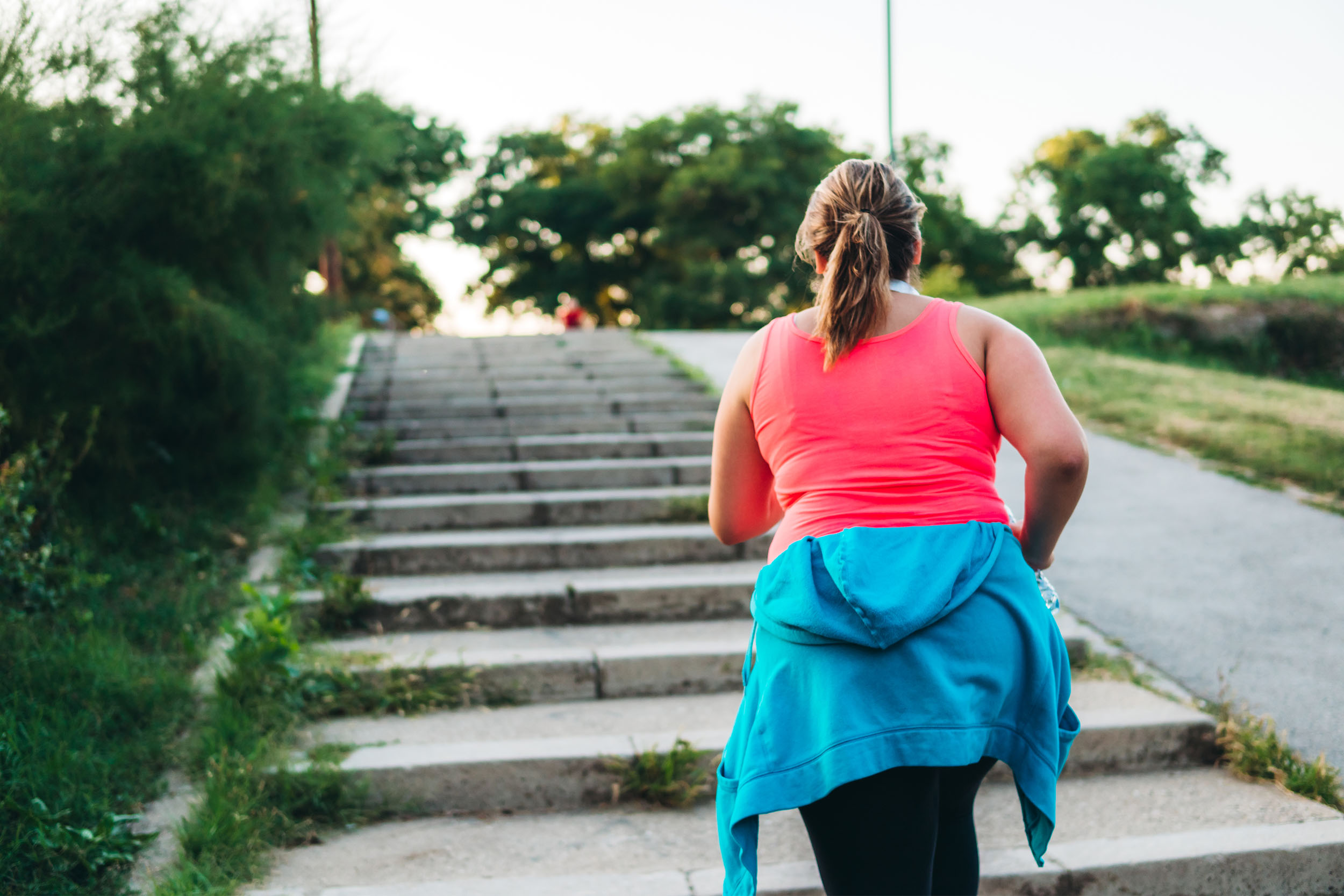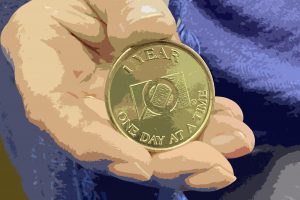During my relapse, I talked regularly and honestly with my sponsor. Every morning, I prayed to be willing and asked for my compulsion to be lifted.
When I came back to OA in 2022, I committed to a food plan, found a sponsor, faithfully attended meetings, worked the Steps and used the Tools. A year later and 50 pounds (22.5 kg) lighter, my Higher Power and my abstinence fostered clarity about my character defect of procrastination. This prompted me to begin an intense period of disciplined and persistent work on a bucket-list goal of mine, one that had languished unfinished for years. Six months later, I accomplished my goal. Success!
But during those six months, as I pushed beyond my procrastination, I dove back into the food and regained half of the weight I had lost. In retrospect, I have realized that achieving a lifelong goal of such significance had stirred feelings of exposure and vulnerability, which triggered my relapse back into insanity with food.
During my relapse, I talked regularly and honestly with my sponsor. Every morning, I prayed to be willing and asked for my compulsion to be lifted. I read program materials, journaled, started another Step-study workbook, and kept going to meetings. But when a food thought entered my head, it was like the blast of a starter pistol, and I’d be instantly off and running, mindlessly eating, ignoring every tool and strategy I knew would have helped. Praying never occurred to me in the split second poised before the first compulsive bite. Why couldn’t I become aware in the moment that I was on the edge of violating my commitment to abstinence?
Why couldn’t I become aware in the moment that I was on the edge of violating my commitment to abstinence?
After months of struggle, my Higher Power’s prompt, “You have a habit of eating without noticing,” finally got my attention, and a glimmer of understanding dawned on me as I recognized the pattern.
As a small child in a difficult environment, I felt safer avoiding awareness of the body that I was ashamed of and suppressing emotions that I feared would overwhelm me. I craved the erasing of discomfort, which meant bypassing awareness of the current moment. Very early, I discovered that food could distract me and numb me from the experiences that I urgently wanted to block from consciousness. So any emotion was my prompt to eat, not the physical sensation of hunger. Like a heroin addict doesn’t love the needle, I don’t love food. We’re both aiming for the aftereffects: escape.
As an adult living alone, my habit was to eat in front of the television or a book. I didn’t savor my food, I wolfed it down as quickly as possible to achieve the numbness that was my unconscious goal. I didn’t notice the experience of the food itself, or my bodily sensations, till I was already uncomfortably stuffed. As it says in A New Plan of Eating, “We came to understand that the basis for stopping our compulsive food behaviors—and staying stopped—is personal, inner change. . . We learn we must change our destructive ways of eating if we are to recover from our disease” (pp. 1–2).
Change. How does that happen? How does anyone establish and anchor a new habit to replace a long-embedded one? How could I remember to use new tools in the midst of a mindless rush to medicate a feeling that I didn’t yet realize was welling up? As the old saying goes: How do you get to Carnegie Hall? Practice, practice, practice. I am convinced God prompted me to see this path to recovery, but I had to do the footwork.
I would now have to learn to slow myself down, to pay attention in the present moment to what and how I ate. I needed persistent practice to insert a new impulse: to ask for help. I wanted and needed it to become automatic so it would arise in the midst of my craving. Achieving this new habit would take slowing down and paying attention, and a lot of repetition to counteract my reflexive reaching for food. I needed to incorporate awareness into my action plan every day, every meal.
I needed to incorporate awareness into my action plan every day, every meal.
I resolved to eat all my meals mindfully, focused on how and what I ate. I set the table with a placemat and a cloth napkin and lit a candle. When I sat down, I invited God’s presence and blessing. I noticed the colors and textures of the foods I had chosen. I savored the tastes, the sensation in my mouth and throat as I swallowed, and how my belly felt in receiving the food.
I laid down my fork to slow myself, an opening to offer gratitude for God’s design for sustaining human bodies through eating and digesting what nature so amply provided. I prayed for those people who labored in all the processes that led to the food’s arrival on my plate. I meditated on God’s purposes in the design of my body’s systems to receive and administer nutrition to my cells in order to enhance my body’s function, along with the pleasures of taste and fullness. I pondered how my body was nourished and blessed by foods with high nutritive value, contrasted with how the empty calories I had habitually used to stuff myself must impede the work of my body to keep me alive and moving and thinking and thriving. And I asked God to show me when I was full, when I’d had enough.
Mindless eating invites compulsive eating. I am grateful to have found the blessing of mindful eating. For me, this practice is the key to today’s awareness and abstinence. I’ll renew it again tomorrow. And keep coming back, at every meal, to the present moment.
—Judy E.





